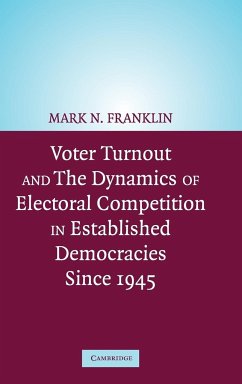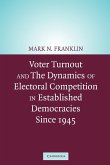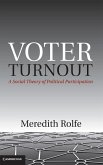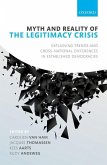Short description/annotation
This book shows how voter turnout is an indicator of the health of a democracy.
Main description
Voting is a habit. People learn the habit of voting, or not, based on experience in their first few elections. Elections that do not stimulate high turnout among young adults leave a 'footprint' of low turnout in the age structure of the electorate as many individuals who were new at those elections fail to vote at subsequent elections. Elections that stimulate high turnout leave a high turnout footprint. So a country's turnout history provides a baseline for current turnout that is largely set, except for young adults. This baseline shifts as older generations leave the electorate and as changes in political and institutional circumstances affect the turnout of new generations. Among the changes that have affected turnout in recent years, the lowering of the voting age in most established democracies has been particularly important in creating a low turnout footprint that has grown with each election.
Table of contents:
Part I. Introduction; Part II: 1. Confronting the puzzles of voter turnout; 2. A new approach to the calculus of voting; 3. The role of generational replacement in turnout change; 4. Rational responses to electoral competition; 5. Explaining turnout change in 22 countries; 6. Electoral competition and the individual citizen; 7. Understanding turnout decline; 8. The turnout puzzles revisited; Part III. A. The surveys employed in this book; B. Aggregate data for established democracies, 1945-49; C. Supplementary findings.
This book shows how voter turnout is an indicator of the health of a democracy.
Main description
Voting is a habit. People learn the habit of voting, or not, based on experience in their first few elections. Elections that do not stimulate high turnout among young adults leave a 'footprint' of low turnout in the age structure of the electorate as many individuals who were new at those elections fail to vote at subsequent elections. Elections that stimulate high turnout leave a high turnout footprint. So a country's turnout history provides a baseline for current turnout that is largely set, except for young adults. This baseline shifts as older generations leave the electorate and as changes in political and institutional circumstances affect the turnout of new generations. Among the changes that have affected turnout in recent years, the lowering of the voting age in most established democracies has been particularly important in creating a low turnout footprint that has grown with each election.
Table of contents:
Part I. Introduction; Part II: 1. Confronting the puzzles of voter turnout; 2. A new approach to the calculus of voting; 3. The role of generational replacement in turnout change; 4. Rational responses to electoral competition; 5. Explaining turnout change in 22 countries; 6. Electoral competition and the individual citizen; 7. Understanding turnout decline; 8. The turnout puzzles revisited; Part III. A. The surveys employed in this book; B. Aggregate data for established democracies, 1945-49; C. Supplementary findings.








